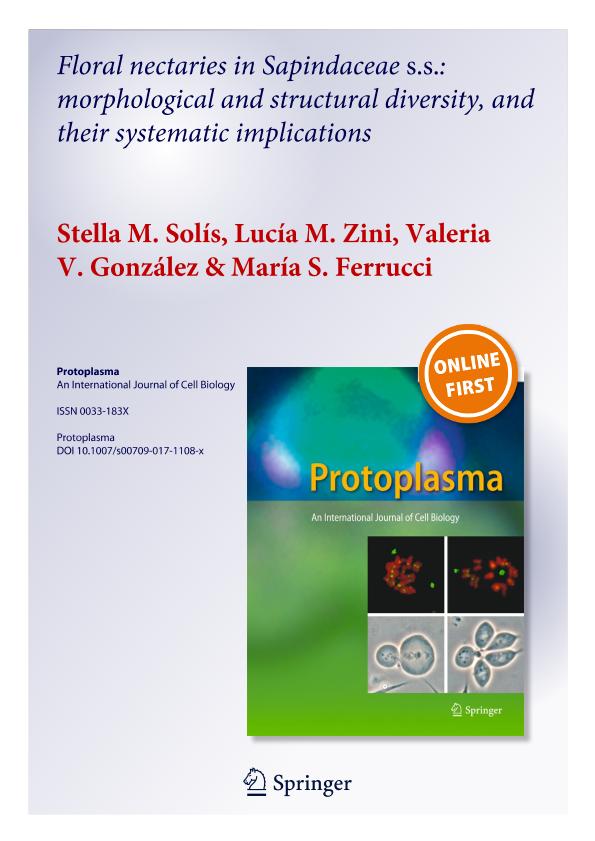Artículo
Floral nectaries in Sapindaceae s.s.: morphological and structural diversity, and their systematic implications
Fecha de publicación:
04/2017
Editorial:
Springer Wien
Revista:
Protoplasma
ISSN:
0033-183X
Idioma:
Inglés
Tipo de recurso:
Artículo publicado
Clasificación temática:
Resumen
We investigated the morphology and structure of the floral nectary in 11 Neotropical genera belonging to the subfamilies Dodonaeoideae and Paullinioideae (Sapindaceae) from southern South America representing three tribes (Dodonaeaeae, Paullinieae, and Melicocceae), in relation to other floral traits in species with contrasting morphological flower characteristics. Nectary organization was analyzed under light, stereoscopic, and scanning electron microscopes; Diplokeleba floribunda N.E. Br. was also observed using transmission electron microscopy. Our comparative data may contribute to the understanding of floral nectary evolution and systematic value in this family. The nectaries were studied in both staminate and pistillate flowers. All the floral nectaries are typical of Sapindaceae: extrastaminal, receptacular, structured, and persistent. The anatomical analysis revealed a differentiated secretory parenchyma and an inner non-secretory parenchyma; the nectary is supplied by phloem traces and, less frequently, by phloem and xylem traces. Nectar is secreted through nectarostomata of anomocytic type. The anatomical analysis showed the absence of nectary in the three morphs of Dodonaea viscosa flowers. Nectary ultrastructure is described in D. floribunda. In this species, the change in nectary color is related to progressive accumulation of anthocyanins during the functional phase. We found relatively small variation in the nectary structural characteristics compared with large variation in nectary morphology. The latter aspect agreed with the main infrafamilial groupings revealed by recent phylogenetic studies, so it is of current valuable systematic importance for Sapindaceae. In representatives of Paullinieae, the reduction of the floral nectary to 4–2 posterior lobes should be interpreted as a derived character state.
Palabras clave:
Color Change
,
Morphology
,
Nectarostomata
,
Sapindaceae Floral Nectary
,
Structure
Archivos asociados
Licencia
Identificadores
Colecciones
Articulos(IBONE)
Articulos de INST.DE BOTANICA DEL NORDESTE (I)
Articulos de INST.DE BOTANICA DEL NORDESTE (I)
Citación
Solis, Stella Maris; Zini, Lucia Melisa; González, Valeria Vanesa; Ferrucci, María Silvia; Floral nectaries in Sapindaceae s.s.: morphological and structural diversity, and their systematic implications; Springer Wien; Protoplasma; 254; 6; 4-2017; 2169-2188
Compartir
Altmétricas




